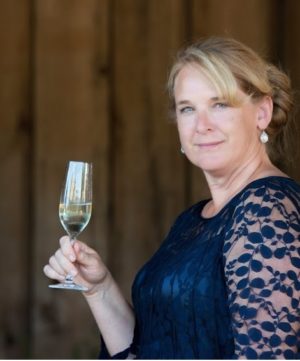Last week, SOVOS/ShipCompliant, in conjunction with Wines Vines Analytics, released its mid-year DTC shipping analysis. Though data touts some gains, Larry Cormier, general manager of SOVOS, notes, “It’s still early to sort out the ‘COVID effect’ on volume and value of DTC wine shipments—and what it means for the future. What is clear is that the ‘stay-at-home’ world of 2020 drove ‘buy-at-home’ behavior across all retail markets. Wine was no exception—we saw a 27 percent increase in online wine purchases over 2019 volumes in 2020. That’s three-years’ worth of growth in one year.”
Data for 2021 shows value as the noteworthy statistic, with average bottle prices up 10 percent. Total volume of wines shipped DTC has also inched up 1.9 percent over 2020 numbers.
Sonoma County sold the most wine by volume over the past twelve months, at 2.8 million cases, however it is the only region to have dropped its average bottle price ($26.58).
Oregon wineries also stood out in the report, enjoying an overall month-to month shipping increase in shipped DTC wines this year, as well as posted a large gain on their average price per bottle of 21.3 percent.

Per the report, sparkling wines were a big winner in the amount of wine shipped, with an almost 4 percent share of the market so far this year, with gains in both the volume (30 percent) and value (41 percent) categories.
Two uncommon varietal bottlings made top showings this first half of 2021: Cabernet Franc saw a 29 percent increase in value growth, Riesling a 25 percent increase. Cormier comments that part of the reasoning is, “Just math—both Cabernet Franc and Riesling are growing off smaller shipment numbers than the the more established varietals. But I think the real reason American buyers are turning their attention to these varietals has more to do with the attention and expertise producers are bringing to those wines. Napa especially is producing world class Cabernet Franc at affordable prices.” He comments that many other areas are making good Riesling as well, including Oregon, New York, and Michigan.
The largest wineries (over 500,00 case production) saw the largest volume and value growth, predominantly due to their normally lower price points. Small wineries (5,000-49,000 cases) saw the next largest growth in both areas. “Small premium wineries—most family-owned and -operated—have been the backbone of the DTC wine market since the beginning in 2005,” says Cormier. “The scarcity of their higher price-per-bottle offerings lend themselves perfectly to online and club-style purchasing.”
Reflecting over the past two years, Cormier gives credit to producers becoming increasingly sophisticated in the tools of e-commerce. “Many are investing heavily in the platforms and processes necessary to sustain growth,” he says. “They are learning and implementing many of the best practices from other luxury online segments. That includes better use of data analytics and audience targeting.”
_______________________________________________________________________

Offering a well-rounded view of the wine industry, Dawn Dolan transitioned from doing administration for the University of Michigan, to spending six years as both Marketing and Wholesale Manager for the Wilson Artisan Wines group, where she learned the ins and outs of the wine industry. Dolan describes herself as a Zinfandel grape grower who has also been an amateur wine maker for fifteen years. She learned viticultural and winemaking strategies from attending classes at the Santa Rosa Junior College, as well as from the professional winemakers with whom she has worked. With this multi-faceted experience in the wine world, she brings a consideration of different viewpoints to her work.
Dolan started Dolan Wine Business Consulting, a private marketing consultancy, eight years ago. She works with wineries and a variety of wine country businesses. She has been contributing to Wine Industry Advisor since 2015.





